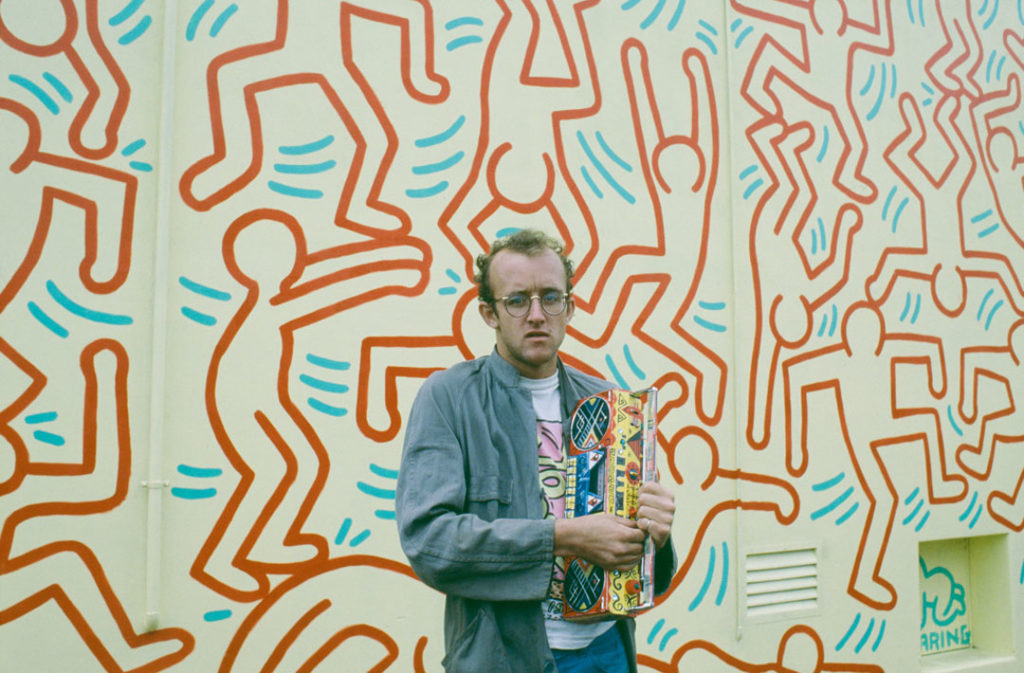It’s March 6, 2020. One of my last memories before the world changes. I’m at the NGV with my friend Holly, engulfed in an air of pretentiousness and swirling wine glasses. People are packed close together. We take a seat on a hard leather couch, gawking at an untitled Keith Haring painting and feeling out-of-place, outcasted, outwitted by the South Yarra socialites and St Kevin’s boys-turned-film-photographers that surround us.
One thing everyone in the gallery has in common, is that we all stare and gawk. We take in. We notice and look at the Haring and Basquiat artworks displayed for our pondering amusement. These artworks, made with heart and fire and history and personality, hung on the walls of the NGV for people to simply look at and move past, move on from. There’ll be another exhibition in a few months’ time, and these people, including myself, will forget about Haring and Basquiat for a while, although they’ll still be floating in the ether of pop culture and the Internet. Still around not physically, but atmospherically and intellectually to use in arguments about how the art scene has gone downhill, or how queerness wouldn’t be what it is today without them both.
Or maybe Cotton On will launch a limited edition Keith Haring collection of definitely sustainable clothing made by workers who are definitely paid a living and fair wage.
Haring’s effervescent prowess began booming in the early 1980s. A member of the growing alternative art scene, Haring began drawing on empty advertising panels in New York subways. Sometimes illustrating over forty artworks a day, commuters began recognising Haring’s work and from these early, humbler days, he amassed a dedicated cult of admiring followers. From then, Haring’s work – bouncy, unique and provocative – began appearing in an abundance of exhibitions, galleries and murals around the world, including one here in Collingwood.
Haring’s works had always commented on society in some way, whether it be on love, addiction or most famously, the AIDS crisis. Right up until his passing at thirty-one from AIDS-related complications, Haring constantly caught the attention of the public admirably, angrily, and awe-inspiringly.
Pretty profound artist.
Which is why it leaves a sour taste when brands commercialise off his work and the meanings behind them. UNIQLO and Tommy Hilfiger did so a few years ago, now with Cotton On following suit. The styles are cute; vibrant colours and displays of beloved, immediately-recognisable designs. But these artworks, immersed in social commentary and ideations on human nature, have been plastered on $35 T-shirts with the urgency of ‘LIMITED TIME!’ advertised next to them.
When I told my friend who works at Typo that I was writing this article, she told me that eight-per-cent of the proceeds go to the Keith Haring Foundation. It still feels disingenuous to have the lifetime legacies of one of the greatest artists of all time belittled to cotton threads and point additions to your Perks card. It makes me wonder, how do the true cult fans of Haring, who have studied and admire his work profoundly, feel about this?
Perhaps more context is needed to deepen that question.
At the height of his success, Haring opened ‘Pop Shop’, his own merchandise store in New York, which sold clothing items depicting his art. This was to the dismay of members of the art community, who incited that he was ‘selling out’ or giving into commerciality over individuality. What can’t be debated, is that Haring’s work is loved because it’s his work; timeless, earnest and revolutionary in its own way. It looks good on a T-shirt and he knew it first.
Perhaps art can exist multidimensionally. Maybe Haring’s legacy is solidified through an NGV exhibition, in a heritage-listed mural, in a charity foundation, and when you walk passed someone with a Cotton On jumper portraying those iconic doodles that can only belong to one artist.
Article written by Savannah Selimi for Catalyst’s CULT Issue


